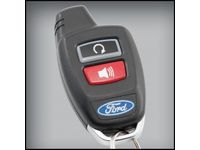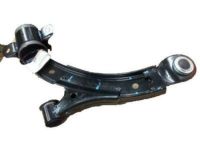

Why choose FordPartsGiant
- Devoted Service
At FordPartsGiant.com, we strive to make customer satisfaction our #1 goal by providing dedicated customer service. Our core values of success continue to demonstrate our loyalty by building dedicated relationships with all of our current and future customers. We are always ready to assist you with the slightest detail about your Ford Mustang parts and accessories.
- Reasonable Prices
We are the right online source for discounted prices on OEM Ford Mustang parts and accessories. Not everyone has the money to buy their vehicle quality parts, here at FordPartsGiant.com we make it economical to buy genuine Ford Mustang parts without sacrificing the quality or hurting your wallet.
- Swift Delivery
FordPartsGiant.com has centrally located distribution centers all across the United States. This gives you quick access to our discounted Ford Mustang parts when you need them. We offer our customers the convenience of having parts delivered straight to their front door. We are committed to having your Ford Mustang up and running in just a couple of days.
Popular Genuine Ford Mustang Parts
- Engine Parts View More >
- Chassis Parts View More >
- Electrical Parts View More >
- Body And Paint Parts View More >
- Lamps & Wiring Parts View More >
- Wheels & Brakes Parts View More >
- Fuel System & Manifolds Parts View More >
- Speedometer, Bumpers, Mirrors & Wipers Parts View More >
- Transmission Parts View More >
Shop Genuine Ford Mustang Parts with FordPartsGiant.com
The Ford Mustang is a renowned American car, known for its unique 'pony car' design-a sports car-like coupe with a long hood and short rear deck-which has influenced numerous other models including the Chevrolet Camaro, Toyota Celica, and Ford Capri. With over 10 million units produced since its inception in 1964, the Mustang has remained a popular and continuously produced model, now in its sixth generation. The first Ford Mustang introduced a '2+2' design, similar to the European sports car Jaguar E-type, enhancing interior space and exterior aesthetics. The second generation aimed to compete against Japanese imports like the Datsun 240Z and Toyota Celica, and although it was smaller, it was heavier due to additional equipment for new U.S. emissions and safety regulations. The third generation, known to enthusiasts for its 'four eyes' rectangular headlights, offered diverse body styles and trims. In 1993, the Mustang underwent its first major redesign in 15 years with the fourth-generation model, featuring elements from previous Mustangs, yet discontinuing the hatchback model. The 2005 model, introduced as 'S-197', featured a retro-futuristic design based on a new platform. The Ford Mustang's enduring popularity lies in its unique blend of style, performance, and adaptability.
Despite the popularity of the Ford Mustang, it's not immune to wear and tear over time, with two common issues being engine and transmission problems. Owners often report a decrease in fuel efficiency, power, acceleration, alongside difficulty starting their Mustangs. Engine issues can also include stalling, misfiring, overheating, noise, and persistent check engine light. If you notice these, consider checking the engine control module, intake manifold gasket, exhaust manifold gasket, oxygen sensor, timing belt, and timing chain. Transmission and braking issues are also reported, typically characterized by a slippery clutch disc and problems with brake application leading to vibrations and squealing noises. If your brake pedal becomes pulsating or the brakes respond poorly, inspect the brake pads and brake disc. Lastly, while the fog light bulb is beneficial in extreme weather, don't neglect regular maintenance of the headlights and horn, often taken for granted but crucial for safe driving.
For unrivaled quality, OEM parts are the ultimate choice. These parts are manufactured by Ford's official factory using top-quality materials and undergo strict testing procedures, ensuring outstanding dependability and long-lasting durability. For superior quality and affordable Ford Mustang parts, consider our website. We proudly present a wide selection of genuine Mustang parts at unbeatable prices. These OEM parts, supported by the manufacturer's warranty, are also eligible for our hassle-free return policy and swift delivery service.
Ford Mustang Parts Questions & Answers
- Q: How do you adjust the parking brake cable on Ford Mustang?A: To adjust the parking brake cable, apply the parking brake lever four times. Open the center console and remove the cable adjuster cover. Turn it clockwise to tighten, counterclockwise to loosen. The correct adjustment is when the nut touches the lever in its lowest position. Apply the brake lever four times, recheck, and replace the cover in the console.
- Q: How do I remove and install the front stabilizer bar, Bushing and links on Ford Mustang?A: Raise and secure the vehicle on jack stands and discard sway bar-to-link nuts while holding the ball stud with a wrench. To remove the link, remove strut-to-link nuts. Detach the sway bar kit from the vehicle by removing the bracket nuts. Inspect and discard damaged bushings. Lubricate and install new bushings onto the bar kit. Install sway bar links with new nuts. Finally, tighten all nuts to the specified torque.
- Q: How to remove and install a steering gear and control arm on Ford Mustang?A: Loosen lug nuts, raise the vehicle, and place on jackstands. Remove the wheel and steering knuckle pinch bolt. Separate the knuckle from the balljoint and control arm. Remove steering gear fasteners and pivot bolt, being careful not to damage the boot. Remove rear fasteners, control arm, and rear bracket. To install, reverse the process, ensuring all fasteners are tightened to torque. Lug nuts should also be tightened to torque. Rear fasteners can be reversed for easier installation. Check and adjust front wheel alignment if needed.


















































